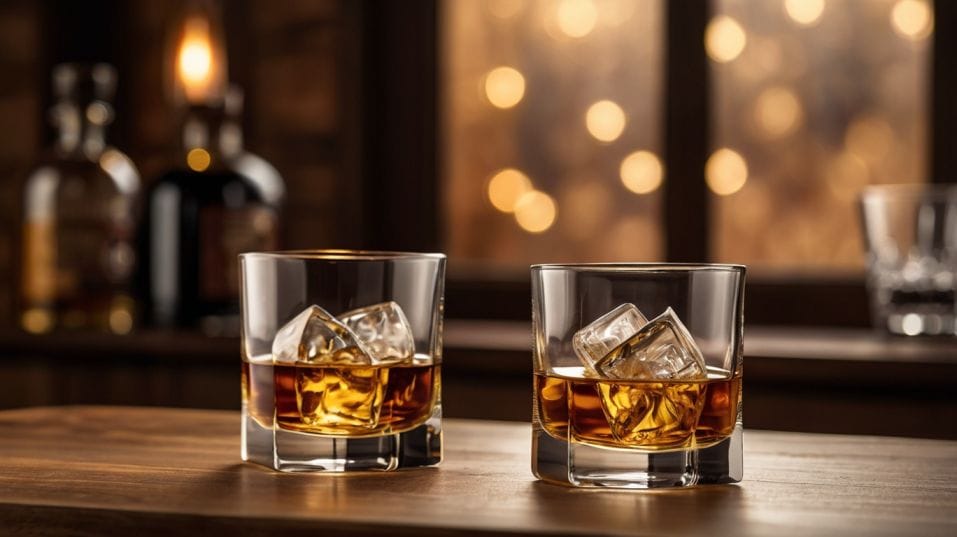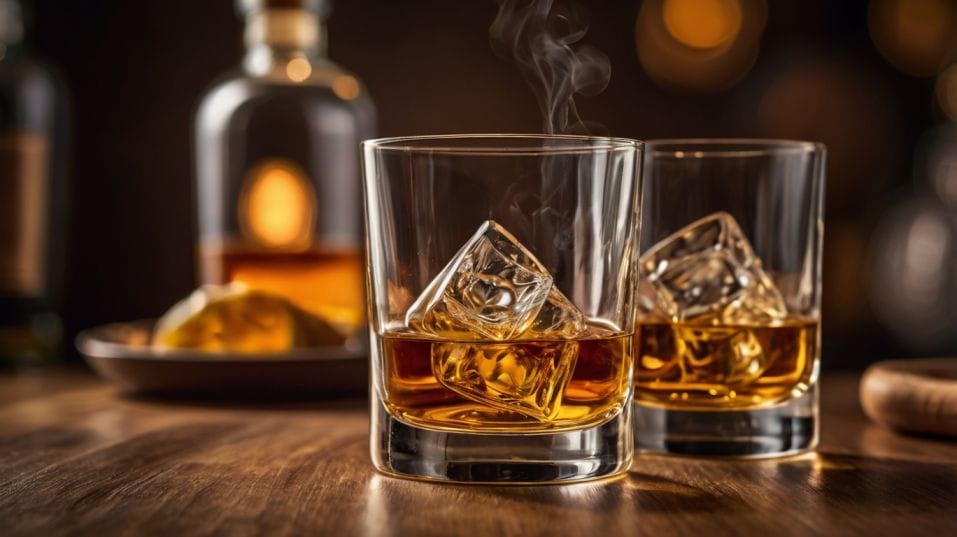The Origin of Whiskey Toasts and Traditions
Explore the deeper meaning behind whiskey toasts. Learn the traditions, rituals, and tips that turn each pour into something unforgettable.

Why do we raise a glass before we drink? If you're early in your whiskey journey, the answer might surprise you. Toasting isn't just tradition—it’s a signal. It marks a moment, invites connection, and honors what matters.
From ancient rituals to modern fire circles, the whiskey toast has always been about meaning, not performance. And once you understand where it comes from, every pour starts to feel more personal.
What a Toast Really Is (and Isn’t)
Let’s be clear: a whiskey toast isn’t a gimmick. It’s not what someone yells before downing a shot of flavored liquor in a loud bar. That’s performance.
Real toasting is personal. It’s deliberate. You lift your glass not just to drink—but to acknowledge something bigger. Time. People. History.
The word “toast” itself goes back to the 17th century, when actual spiced toast was floated in punch bowls. But the act of lifting a drink in honor goes much further.
Across cultures—Gaelic, Norse, Roman, Japanese—the gesture of raising a cup was sacred. It signified trust, respect, unity. In some cases, it was a peace offering. In others, a battle cry.
When whiskey entered the scene, the toast evolved. It became slower, more thoughtful. Because whiskey itself demands patience.
You can’t toast with a drink that insists on being rushed. That’s why true whiskey drinkers don’t fake toasts. They craft them.

Gaelic Roots and Clan Culture
In the Highlands of Scotland and the glens of Ireland, toasting wasn’t just custom—it was code. When clans gathered, the head of the table would offer a toast before anyone drank. It was a way to unify the room.
To honor the living. To remember the dead. The phrase “Slàinte Mhath” (pronounced slan-cha vah), meaning “good health,” wasn’t just a feel-good wish. It was a shield. A reminder of survival in hard times, battles, famine, and exile.
In Irish culture, the toast became a deeply social practice. In pubs and at wakes, a round wasn’t just served—it was punctuated with words. Sometimes funny, sometimes heartbreaking, often poetic. But always purposeful.
If you're collecting whiskey today—whether it’s a $40 single malt or a dusty indie release—knowing this history elevates what’s in your glass. You’re not just holding a product. You’re holding a vessel of story and place.
The Right Way to Toast (and Why It Matters)
Don’t overthink the “right” words. The best toasts don’t follow a script. They follow the moment.
Here’s what does matter:
- Be present. Lift your glass with clarity. If you're leading the toast, speak up and look people in the eye. Confidence beats cleverness every time.
- Respect the pour. You’re not slamming this. You’re sipping it. A great toast lets the whiskey shine. Let the silence afterward do some of the work.
- Match the tone. Toasting a milestone? Make it sharp. Reflecting on someone who’s passed? Make it quiet. Whiskey, like words, needs intention.
These aren't just etiquette notes. They’re training tools. The more you practice mindful drinking, the more your palate sharpens. You start to connect flavor to moment. And that’s where real appreciation begins.
Every toast is a frame. It focuses attention. It’s why whiskey shared over a campfire tastes different than the same whiskey alone at your desk.
Your brain encodes taste in context. Build better rituals, and your collection becomes more than bottles on a shelf—it becomes a map of your life.
Collecting with Purpose
You’ll see a pattern if you pay attention to serious collectors: they don’t chase trophies—they build narratives. A bottle from a wedding.
A dram discovered on a trip. A single malt opened on the night they got promoted, divorced, or finally walked away from a dead-end job.
Toasts are how those moments get etched into memory. If you want to level up your whiskey journey, start anchoring bottles with real meaning. When you open something new, toast it.
Say why. Say what this bottle represents. That habit not only makes the whiskey taste better—it gives your collection emotional gravity.
Whiskey Clubs, Fire Circles, and the New Ritual
The tradition is alive, not static. Modern whiskey circles—whether they meet online, in garages, or around bonfires—are creating their own versions of the toast. No kilts required. Just intention.
Here’s the truth: the whiskey world can feel like a gate-kept club. But you don’t need to quote Burns or know every distillery in Campbeltown to belong. What you do need is curiosity and respect for the glass in front of you.
A good whiskey group will welcome new drinkers as long as they show up for real. Bring something. Ask something. Say something when it’s your turn to toast.
Final Thoughts
If you want to drink whiskey well, learn to slow it down. Let every pour mean something. A toast isn’t extra—it’s essential. It’s how you mark time, connect memory to flavor, and build a deeper relationship with the spirit.
So tonight, lift your next glass with intention. Toast something that matters. A friend, a lesson, a risk you finally took. Speak it out loud. Then sip.
That’s how you move from collecting bottles to collecting moments. That’s how you turn drinking into something closer to craft. And that’s how you become the kind of whiskey drinker people remember. Start tonight.




